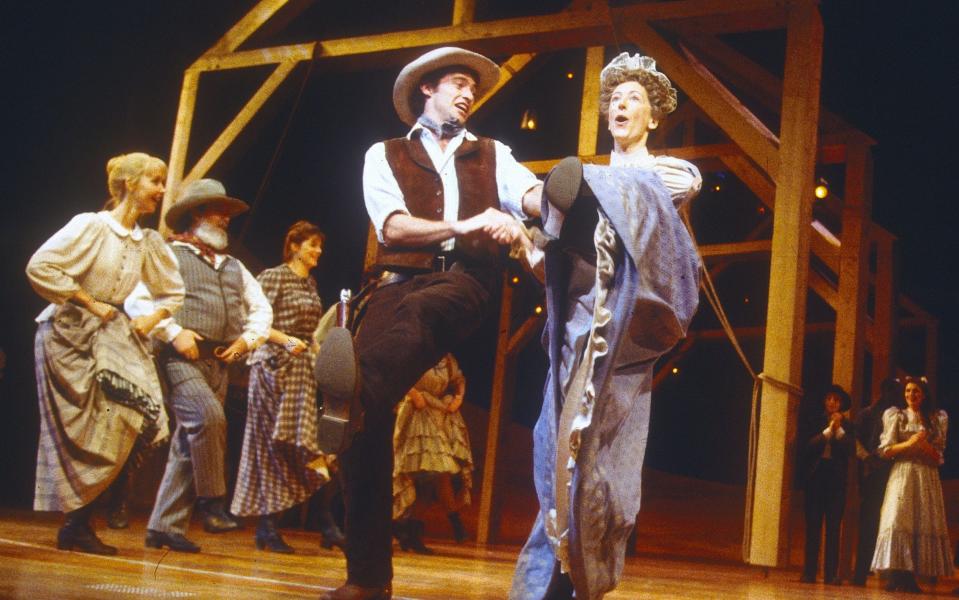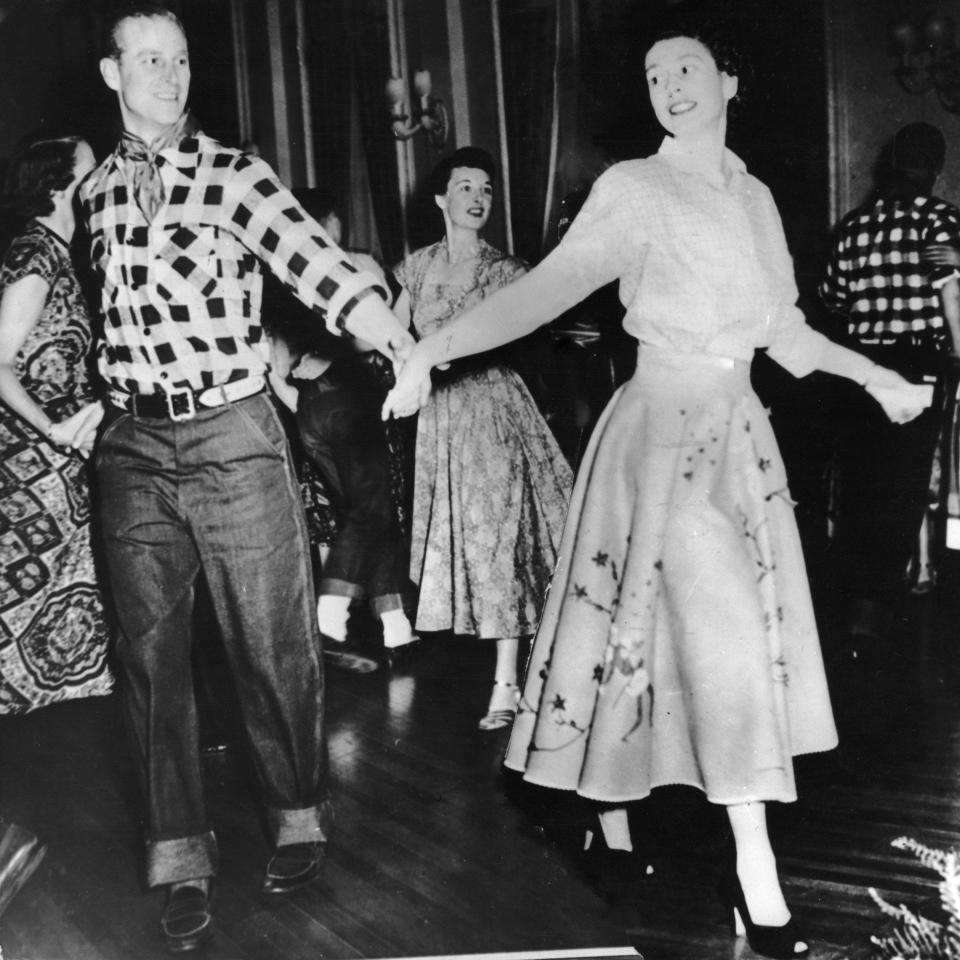How the musical Oklahoma! played a little-known role in the courtship of the Queen and Prince Philip

On April 30 1947, Rodgers and Hammerstein’s first musical collaboration, Oklahoma!, opened in the West End. But that evening wasn’t just special for cementing a great theatrical partnership, and ushering in the more sophisticated “book musical”, where songs are fully integrated into the story. It also played a starring role in the courtship of the future queen and Prince Philip.
The opening night featured luminaries in the audience such as Noël Coward, Laurence Olivier and Vivien Leigh. Yet all eyes were on the Royal family: George VI, Queen Mary, Princess Elizabeth and Princess Margaret were all in attendance. And accompanying them was Prince Philip, with whom Elizabeth had struck up a serious – but distanced – romance. The distancing was due to Philip’s job in the British Navy, which kept him away for months on end. The Oklahoma! trip thus constituted one of the rare occasions they could enjoy an evening out together.
It clearly made an impact on the couple. Andrew Lloyd Webber revealed in 2012 that he was made privy to a list of the Queen’s favourite songs, ahead of organising a private birthday celebration for her at his home in Newbury – and among them was People Will Say We’re In Love, the justly celebrated central love song from the show the Queen had seen 65 years earlier.
In the musical, which is set in 1906 Oklahoma, farm girl Laurey and cowboy Curly – played by Betty Jane Watson and Howard Keel in the 1947 London production – use the song apparently to warn one another not to behave as if they’re soft on each other, since gossip suggests that they might be and each has been too proud to admit that they are. But in its enchanting lyrics, and the aching sentiment of its tune, the song’s confession of their true feelings is all there. As one verse runs:
“Don’t sigh and gaze at me/ Your sighs are so like mine/ Your eyes mustn’t glow like mine/ People will say we’re in love!”
This idea of a secret pact between lovers who haven’t quite worked out how to communicate their affection yet and are also also shy in the eyes of the world fitted the narrative of Philip and Elizabeth so ideally in 1947, it would have been as if, as royal historian Christopher Warwick puts it, “the song was essentially sung to them”.
“It became their song,” says Warwick, who has written the authorised biography of Princess Margaret, among a number of other books on the monarchy. “It would have been a little private joke between them.”

The song is also reflective of a couple who were always formal in public, but who had a remarkable marriage, he adds. “They never fell out of love. How many people can say that after 73 years? Right to the end, they were in love with one another.”
In her memoir, The Little Princesses, royal governess Marion Crawford wrote about the song’s significance to the future queen and her beau. “I noticed that she began to play her gramophone more than usual,” wrote Crawford of the point the courtship was gathering pace, “and that her favourite tune was People Will Say We’re In Love.” Crawford disclosed that when the young couple were dating, Elizabeth would often ask the band to play the number for her so she could dance to it with Philip.
It clearly did the trick. Just months after their theatre trip, on July 9 1947, the couple officially announced their engagement. The last vestige of secrecy was gone, although they still had a song to remind them of that private courtship, just as many other couples have their special song.
And that wasn’t their only theatre “date”, observes Warwick. “The Queen and Prince Philip made a few private visits to the theatre. They would go in at the very last minute, almost when the lights had gone down, and the Queen would say ‘Excuse me’ to people as they were making their way to their seats. Then, of course, word would spread that they were there.”
Over 50 years after they first saw it, the royal couple would also again see Oklahoma! together – this time on an official royal engagement. In 1999, the Queen and Prince Philip attended Trevor Nunn’s acclaimed revival, which had transferred from the National Theatre to the Lyceum Theatre in the West End. The production starred Hugh Jackman – who would go on to Hollywood stardom but at that stage was a little-known Australian actor – and Josefina Gabrielle as the lovers. And having seen that same production myself, at the impressionable age of 13, I can certainly understand the appeal. It’s a show with unmatched, blood-pumping exuberance and a headlong rush of emotion, expressed through ravishing melodies and joyful dances, but also tempered with a dark side that makes you appreciate not just the finding of love – but the precious miracle of keeping it.
Prince Philip may have been more of a pragmatist than a romantic (as he himself said), but in private he shared with the Queen passions for favourite songs and shows, says Warwick. “When it came to parties for birthdays and wedding anniversaries, you’d have people like Joanna Lumley or Sir Richard Stilgoe hosting the evening, comic singers like Dilly Keen, show tunes, all sorts of entertainment.”
American tenor Andrew McNeil, who performed at a dinner at Buckingham Palace, has also spoken about the Royal family’s personal preferences. Wanting to get an idea of what would be well received, he contacted the palace, “and the Queen’s lady-in-waiting informed us she loves show tunes,” he recollected in 2019. “Especially show tunes from Oklahoma!”

